

Ashley Jones
Assignment 6: Activity 1
Activity 1: If the original triangle is equilateral, then the triangle of medians is equilateral. Will an isosceles original triangle generate and isosceles triangle of medians? Will a right triangle always generate a right triangle of medians? What if the medians triangle is a right triangle? Under what conditions will the original triangle and the medians triangle both be right triangles?
From the activity introduction, we know that the medians of an equilateral triangle form an equilateral triangle. Just in case, lets explore this mathematical idea ourselves using Geometer's Sketchpad (GSP). By creating an equilateral triangle, we can then construct the medians of the triangle and measure them ourselves. Below are snapshots of the series of steps taken on GSP to finding the measurements of the three medians of an equilateral triangle.
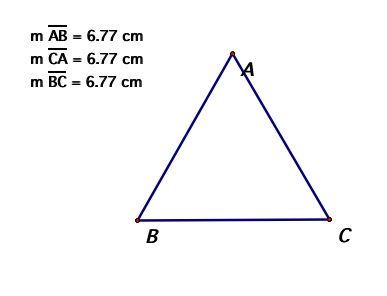
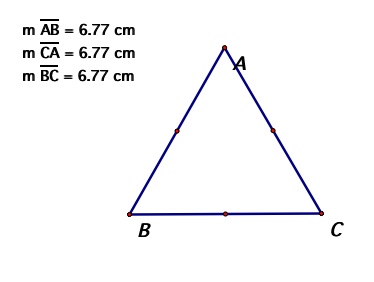


As we can see, all three medians AD, BF, and CE are the same length. Thus, together they would also make an equilateral triangle. Thinking along the same lines, one would hypothesize that the three medians of an isosceles triangle would also form an isosceles triangle. Let's explore this idea by using GSP again. Below are the snapshots of this process. We will construct an isosceles triangle, construct the medians, and measure the lengths.

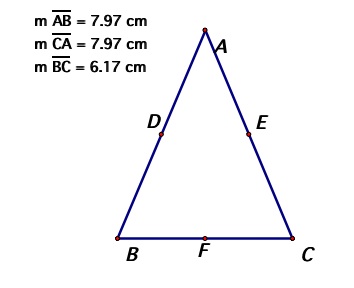
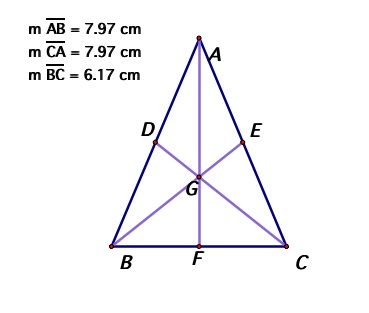

As we can see again, the medians of an isosceles triangle do in fact form an isosceles triangle themselves. In our example, medians AF, BE, and CD form an isosceles triangle since the two medians BE and CD have equivalent lengths. From this we can hypothesize that the two equivalent medians stem from the two equivalent sides of your original isosceles triangle. That is the sides of the triangle AB and AC are equivalent in length, and the equivalent medians come from the midpoints of these two sides.
Let's look at right triangles now. Do you think that the medians of a right triangle will also generate a right triangle? We will investigate this idea by using GSP again. Below are the snapshots from this process. First we will construct a right triangle, find its midpoints, construct the medians, and measure their lengths. If the medians do in fact generate a right triangle, then the Pythagorean Theorem will hold true (a^2 + b^2 = c^2) where c is the largest side.
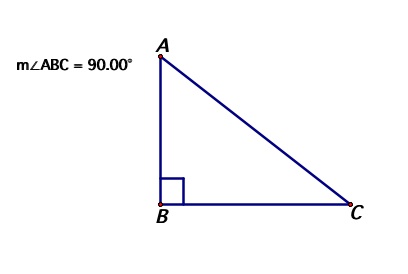

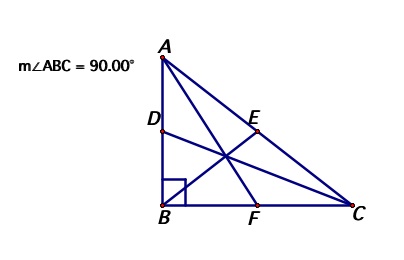
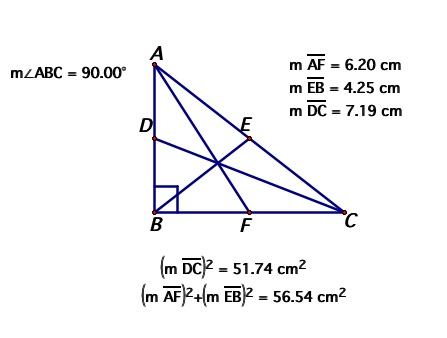
From the above snapshots, we can see that this particular right triangle does not generate another right triangle. This is obvious from the calculations where AF² + BE² does not equal CD². However, we must not be convinced that this is always true. Maybe there is a specific right triangle where the medians do generate a right triangle. By animating the vertex A along the perpendicular line to the base BC it is easy to see that at some angle values the medians do generate a right triangle. This animation can be seen by clicking on this link. Select the vertex A in the sketch and then select animate point under the Display menu. Observing the values of the Pythagorean Theorem calculations, it is apparent that as the angles approach 55 degrees and 35 degrees, the right triangle's medians generate a right triangle as well. We can assume then that the only time a right triangle's medians will generate a right triangle is when the original triangle's angles are 90 degrees, 55 degrees, and 35 degrees. Below are a few snapshots from this exploration that allowed us to find the degree measurements in which the medians generate a right triangle.
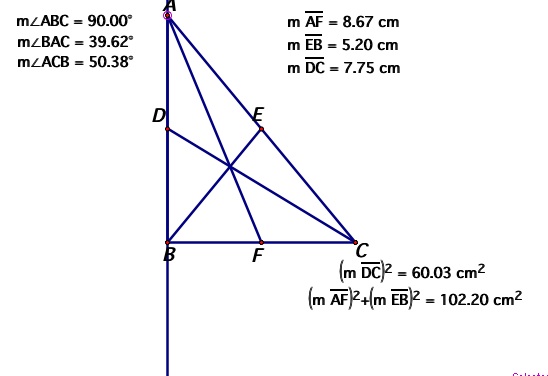
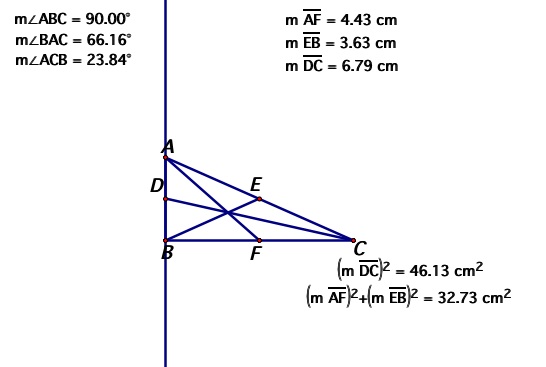
This exploration would be great in the high school mathematics classroom. It gives students the opportunity to work with GSP as well as investigate more into medians through an interactive activity. Additional explorations can also stem from this activity, giving teachers a chance to further their students' mathematical knowledge.